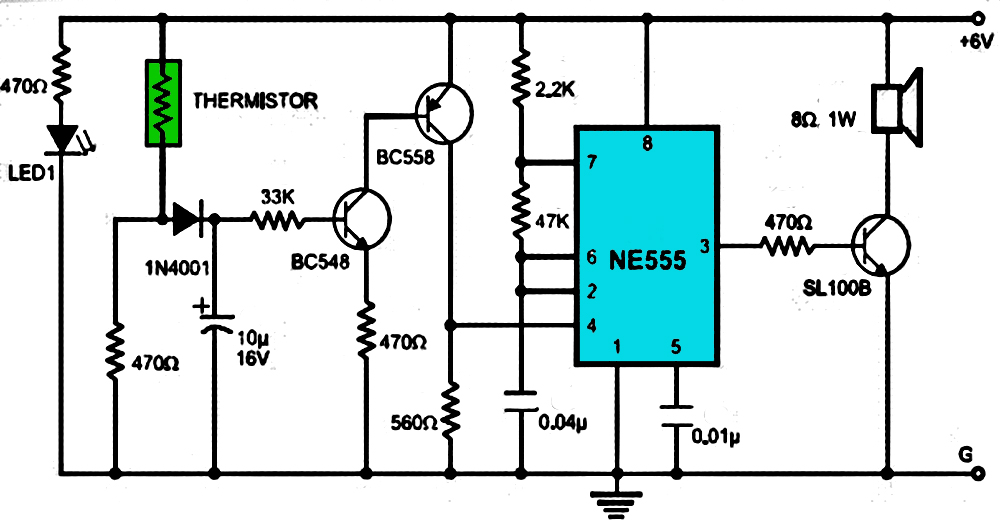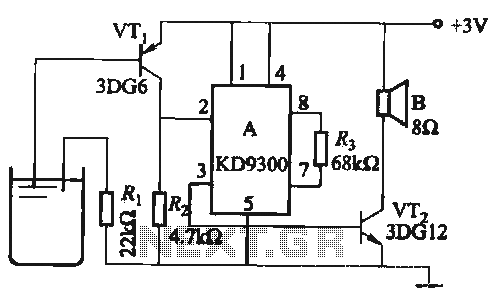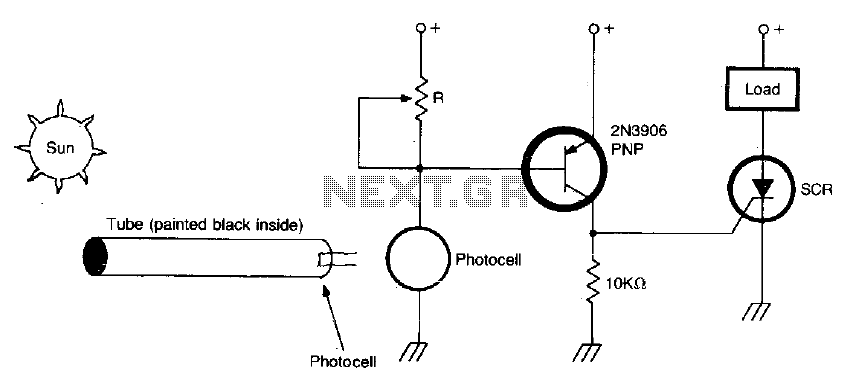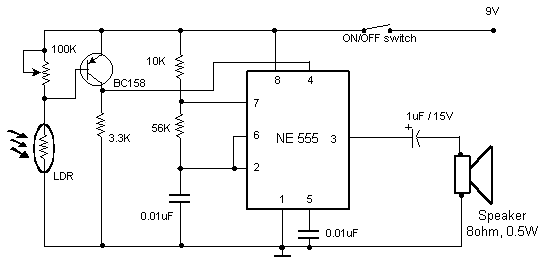
Alarm

This is a simple and easy-to-build multi-tone alarm circuit that can be utilized in burglar alarms or sirens. The circuit is based on the dual op-amp MC1458 and LM380. The two op-amps within the MC1458 are configured to generate square and triangular waves. The LM380 is employed to amplify the output. The first op-amp, IC1a, is arranged as an astable multivibrator, while the second op-amp, IC1b, functions as an integrator to convert the square wave into a triangular wave. The two output waveforms, square and sine, can be selected using switch S1, which directs the signal to IC2 for amplification to drive the speaker. Potentiometer R4 is used for tone adjustment.
The multi-tone alarm circuit is designed for versatility in sound generation, making it suitable for various applications, including security systems. The MC1458 dual op-amp is a key component in this design, as it provides the necessary functionality to create both square and triangular waveforms. The configuration of IC1a as an astable multivibrator allows for the continuous generation of square waves, which are essential for creating the basic alarm tone.
The second op-amp, IC1b, is configured as an integrator, which smooths the square wave output from IC1a into a triangular waveform. This transformation is crucial in producing a more complex sound that can be perceived as a tone, enhancing the alarm's effectiveness.
The selection switch, S1, provides flexibility by allowing the user to choose between the generated square and triangular wave outputs. This feature enables the customization of the alarm tone according to user preferences or specific application requirements. The output from S1 is directed to IC2, which amplifies the signal sufficiently to drive a speaker, ensuring that the alarm is loud enough to be heard clearly in various environments.
The LM380 power amplifier is utilized to boost the audio output, providing the necessary gain to drive the speaker effectively. This amplifier is known for its robustness and is capable of delivering significant power, making it ideal for alarm applications.
Furthermore, potentiometer R4 serves as a tone adjustment control, allowing the user to modify the frequency of the generated tones. This feature is particularly useful in tailoring the alarm sound to suit different preferences or to comply with specific regulatory requirements for alarm systems.
Overall, this multi-tone alarm circuit is a practical solution for enhancing security measures, providing both functionality and adaptability in sound generation. Its straightforward design makes it accessible for both amateur and professional electronics enthusiasts.This is a simple and easy to build multi tone alarm circuit that can be used in burglar alarms or sirens. The circuit is based on dual op-amp MC1458 and LM 380. The two op amps inside the MC 1458 are used to produce square and triangular waves. LM 380 is used to amplify the output. The first op amp IC1a is wired as an astable multi vibrator and seco nd op amp IC1b is wired as an integrator, to make the square wave triangle. The two output square ans sine can be selected using switch S1 to the input of IC2 which amplifies it to drive the speaker. POT R4 can be used for tone adjustment. 🔗 External reference
The multi-tone alarm circuit is designed for versatility in sound generation, making it suitable for various applications, including security systems. The MC1458 dual op-amp is a key component in this design, as it provides the necessary functionality to create both square and triangular waveforms. The configuration of IC1a as an astable multivibrator allows for the continuous generation of square waves, which are essential for creating the basic alarm tone.
The second op-amp, IC1b, is configured as an integrator, which smooths the square wave output from IC1a into a triangular waveform. This transformation is crucial in producing a more complex sound that can be perceived as a tone, enhancing the alarm's effectiveness.
The selection switch, S1, provides flexibility by allowing the user to choose between the generated square and triangular wave outputs. This feature enables the customization of the alarm tone according to user preferences or specific application requirements. The output from S1 is directed to IC2, which amplifies the signal sufficiently to drive a speaker, ensuring that the alarm is loud enough to be heard clearly in various environments.
The LM380 power amplifier is utilized to boost the audio output, providing the necessary gain to drive the speaker effectively. This amplifier is known for its robustness and is capable of delivering significant power, making it ideal for alarm applications.
Furthermore, potentiometer R4 serves as a tone adjustment control, allowing the user to modify the frequency of the generated tones. This feature is particularly useful in tailoring the alarm sound to suit different preferences or to comply with specific regulatory requirements for alarm systems.
Overall, this multi-tone alarm circuit is a practical solution for enhancing security measures, providing both functionality and adaptability in sound generation. Its straightforward design makes it accessible for both amateur and professional electronics enthusiasts.This is a simple and easy to build multi tone alarm circuit that can be used in burglar alarms or sirens. The circuit is based on dual op-amp MC1458 and LM 380. The two op amps inside the MC 1458 are used to produce square and triangular waves. LM 380 is used to amplify the output. The first op amp IC1a is wired as an astable multi vibrator and seco nd op amp IC1b is wired as an integrator, to make the square wave triangle. The two output square ans sine can be selected using switch S1 to the input of IC2 which amplifies it to drive the speaker. POT R4 can be used for tone adjustment. 🔗 External reference





